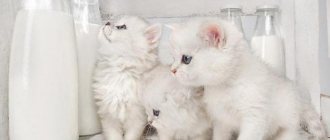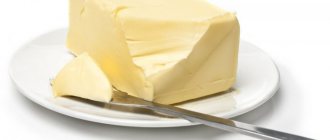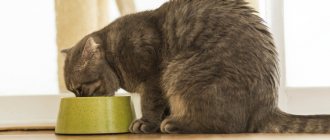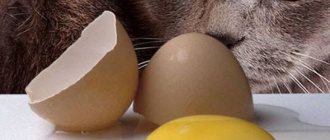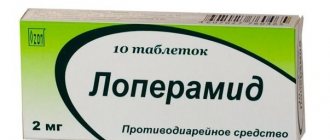An unbalanced diet contributes to the development of various diseases in domestic cats. In order for your pet to live a long and happy life in your family, without experiencing any special health problems, create the right menu for him from healthy foods and be sure to include different types of cereals in your cat’s diet. In our article we will talk about what cereals can be given to cats and what is best to exclude from your furry pet’s diet.
Cereals contain a whole list of useful microelements that have a beneficial effect on the functioning of the digestive tract and the entire body as a whole. This product is served boiled without salt and spices. For appetite, you can mix the finished porridge with other products from the daily diet of your domestic cat. Well, now about everything in more detail!
Acceptable cereals for cats
Cats can be fed easily digestible cereals made from different types of cereals. According to the recommendation of experienced veterinarians, the following should be added to the animal’s diet:
- Rice porridge made from unpolished cereals containing a large number of useful microelements. Rice improves the digestion process and promotes good bowel movements. You can boil cereals in meat or fish broth without salt and spices. For a taste effect, rice is diluted with pieces of lean meat or fish without bones.
- Buckwheat porridge is an equally healthy product in the diet of a domestic cat. This cereal contains a large amount of proteins, carbohydrates, calcium and fiber. All these microelements are synthesized into energy, giving strength and vigor. Calcium promotes the proper formation of bone structure, which is especially important for the proper growth and development of small kittens. Buckwheat porridge can also be seasoned with pieces of meat and a little vegetable oil added for taste.
- Oatmeal and rolled oats are a real storehouse of useful vitamins that prevent the development of skin diseases. This product contains biotin, magnesium, phosphorus, calcium, zinc, sodium, potassium and other beneficial substances. Oatmeal can be cooked in milk, without adding salt or sugar.
- Pearl porridge, rich in various vitamins, should also be present in the diet of a domestic cat. It contains beneficial amino acids that improve intestinal function and prevent the development of allergic reactions in the animal. Such cereals can be boiled in meat broth and served with pieces of boiled meat.
When you can't eat rice
- If the animal is completely healthy, then rice should and is even recommended to be included in the usual diet. If the cat does not have any pathologies, then the cereal will only be useful for the health of the individual. Unfortunately, not all four-legged brethren can boast of excellent health.
- In this case, a lot depends on the situation. It's up to you to decide whether to include paddy in your animal's diet or not. Otherwise, it is forbidden to reward cereal to a cat if it suffers from constipation. In this case, the problem can only get worse.
If you are in doubt about the health of your own animal, it is recommended to visit a veterinarian. After a specialist’s conclusion, you will be able to make a decision whether to give your pet such cereal or not. Remember why it is not recommended to include large quantities of rice in the menu of small kittens. The digestive system will not be able to cope with such food.
Prohibited cereals for cats
The most popular baby porridge is semolina, which is absolutely useless for cats. It has practically no beneficial properties and is characterized by extremely rapid saturation, which can be completely unsafe for the cat’s body.
Semolina porridge can be given to a cat as an exception, but infrequently and in small quantities.
This type of cereal should absolutely not be fed to sterilized cats. Semolina is not suitable for neutered cats either. If you ignore the recommendations of veterinarians and feed your furry friend such useless food, there is a high probability of the animal developing urolithiasis and diabetes. There are also greater risks of obesity.
So, semolina is the most useless and even dangerous product for cats.
The category of prohibited products also includes corn porridge, which is no less useful for tailed representatives. It is poorly absorbed by the body of cats and can cause serious health problems in animals suffering from diseases of the digestive tract. In order not to tempt the fate of the animal, exclude corn porridge from your cat’s diet!
You should also not include pea porridge on your pet's menu. This product is not absorbed by the animal's body and causes constipation and flatulence.
Although wheat porridge contains a lot of useful microelements, it is still not recommended for feeding cats and kittens. Dishes made from this product are difficult to digest and often lead to bloating, flatulence, intestinal colic and dysbacteriosis. And besides, wheat porridge contains a lot of gluten and gluten, which is absolutely unnecessary for the cat’s body.
The list of prohibited cereals also includes barley porridge, which is poorly digestible and negatively affects the functioning of the gastrointestinal tract of animals. Once in a cat's body, the product causes severe fermentation, flatulence, bloating, spasmodic pain and constipation.
Regular consumption of barley porridge leads to the development of inflammatory processes in the intestines and other gastrointestinal diseases.
When you can't eat rice
- If the animal is completely healthy, then rice should and is even recommended to be included in the usual diet. If the cat does not have any pathologies, then the cereal will only be useful for the health of the individual. Unfortunately, not all four-legged brethren can boast of excellent health.
- In this case, a lot depends on the situation. It's up to you to decide whether to include paddy in your animal's diet or not. Otherwise, it is forbidden to reward cereal to a cat if it suffers from constipation. In this case, the problem can only get worse.
If you are in doubt about the health of your own animal, it is recommended to visit a veterinarian. After a specialist’s conclusion, you will be able to make a decision whether to give your pet such cereal or not. Remember why it is not recommended to include large quantities of rice in the menu of small kittens. The digestive system will not be able to cope with such food.
Recipes for delicious porridge for cats
How to prepare delicious porridge for your domestic cat? To do this you will need low-fat meat broth and a little time. The porridge should be cooked longer in a large amount of liquid so that the finished dish has a thin consistency.
People love porridge with salt and other spices, but feeding cats such food is absolutely unsafe. Animals do not recognize the taste of these ingredients, and all your efforts will only harm the cat’s body. Also, do not season porridge with sugar.
If you want to pamper your furry pet with something tasty, sometimes mix ready-made cereal with a small amount of honey. But only infrequently and in minimal quantities!
Cats are also served porridge with fish. This product is given to the animal no more than 2 times a week. Choose lean sea fish without bones. The fish is pre-boiled and cut into small pieces.
Several recipes for preparing tasty and healthy porridge for domestic cats:
- Porridge with vegetables. To prepare, you will need rice or other cereals, boiled carrots and chopped chicken. The finished ingredients are mixed and served warm to the animal.
- Porridge with broccoli in chicken broth with pieces of boiled chicken meat. Broccoli is pre-steamed and chopped into small pieces.
- Rice porridge with salmon. Pieces of fish and half a hard-boiled egg are added to the boiled cereal.
- Porridge with beef liver. To prepare, you will need boiled cereal, a pinch of green peas, chopped meat and a few drops of vegetable oil.
How to help a cat at home with food poisoning
Regardless of what caused the intoxication of the body, a veterinarian should assist the cat in case of poisoning. If possible, you should contact a veterinary clinic as soon as possible. If visiting a doctor is possible only after some time, it is necessary to take measures aimed at reducing the absorption of poison into the blood.
What to do if your cat is poisoned:
- Find out the cause of poisoning;
- Remove the source of poisoning from the pet’s access area;
- Rinse the stomach. To do this, use clean water, which is poured into the cat’s throat using a large syringe without a needle. It is allowed to pour in 250-500 ml of liquid at a time. After this, vomiting is induced by pressing on the far part of the tongue;
- Before washing the stomach, you need to give a sorbent - activated carbon is suitable for this purpose. It prevents toxic substances from being absorbed into the walls of the stomach, taking them onto itself. No more than half of one tablet should be given at a time. It must be crushed, diluted with a small amount of water and poured deep into the throat. Vomiting can only be induced after a few minutes. It is necessary to wait for the sorbent to absorb toxic substances;
- If several hours have passed since the poisoning, you can do an enema to remove toxic substances from the intestines. The volume of liquid introduced into the rectum should not exceed 50 ml;
- To avoid dehydration, your cat needs to be given water. If you refuse water, you should force drink, using a syringe without a needle. You need to drink little by little, with an interval of 15-20 minutes. If vomiting occurs frequently, it will be good if, instead of plain water, you give your pet a saline solution, which helps restore the water-salt balance.
If you are vomiting, you should not use antiemetic drugs. Vomiting is a natural reaction of the body in which harmful substances are removed from the stomach.
Porridge for spayed and neutered people
Castrated and sterilized cats should not be given cereals, which cause obesity and the risk of developing urolithiasis. Prohibited products include semolina, wheat, corn and barley.
Healthy cereals for sterilized and neutered cats should not be mixed with fish, as this product is on the list of prohibited foods for animals after surgery.
Only boiled lean meats, vegetables and herbs can be added to ready-made cereals.
The list of contraindications for feeding also includes liver, milk and sweets. These products cannot be supplemented with ready-made cereal porridges!
You can feed a sterilized cat and a neutered cat often, but in small portions. Proper nutrition will eliminate the risk of developing some diseases inherent in animals after surgery.
Feeding rules
Cats are carnivorous animals, so their diet should contain no more than 20% cereal. Optimal feeding regimen: porridge 3 times a week.
This product should not be given to pets very often, as it can provoke a disturbance in the intestinal microflora. As a result, your pet may develop diseases of internal organs, decreased immunity, excess weight and allergic reactions. It is especially important to monitor the diet of spayed and neutered pets.
You need to carefully introduce porridge into your cat’s diet, as there is a whole list of cereals that can cause harm to the animal. Therefore, you can give your pet only the four types of grain crops described above.
As already noted, porridge in a cat’s diet should be in limited quantities, and to ensure that the product does not cause health problems, the following recommendations should be followed:
- for kittens, pregnant and postpartum cats, it is better to prepare boiled milk porridges - they are easier to digest;
- after a year, milk porridges are undesirable in a cat’s diet - adult pets can eat them with meat, fish or offal;
- sterilized cats are given porridge less often, as they are less active;
- when preparing a dish, the proportions should be observed: meat or offal - 50%, cereals - 35%, the remaining 15% - vegetables, herbs, fats, vitamins;
- There is no need to put any spices or additives into the porridge except a pinch of salt.
For the dish to become part of the diet, the kitten must receive porridge from an early age, as soon as it is weaned from the cat.
What to do if the cat does not eat porridge?
If your pet refuses to eat tasty and healthy cereal porridge, use a trick and mix the finished product with pieces of boiled meat. As practice shows, not a single domestic cat can resist such a mouth-watering delicacy!
Even if there are pieces of half-eaten cereal left on the plate, you shouldn’t despair; a certain amount of the healthy product will still end up in the stomach of your picky pet.
It’s not difficult to force a cat to eat porridge, the main thing is to be smart!
Cooking principles
How to cook rice for a cat at home? Cats should be given exclusively boiled cereals as food. A great idea if you mix it with chicken pieces or fresh vegetables. The share of grain in such a dish should not exceed 25%. If you plan to give your pet exclusively this cereal, then a single serving is approximately 1/4 cup.
Let us remember, dear readers: only cooked cereal and nothing more - no sauce, no garlic gravy. Salt, onions, garlic, spices are all toxic to cats. At a minimum, oxidative damage to blood cells should be expected when these products enter a delicate cat's body. Among other things, garlic causes gastroenteritis, accompanied by increased salivation, nausea, vomiting, diarrhea, and severe stomach pain.
A raw product is harmful to a cat, and absolutely unattractive to it. But there are exceptions, and sometimes it ends up in cat’s stomachs in its raw form. The reaction is not long in coming: bloating, severe vomiting and diarrhea. Alarming symptoms persist for 24 hours, which means immediately contact a veterinarian for treatment.


